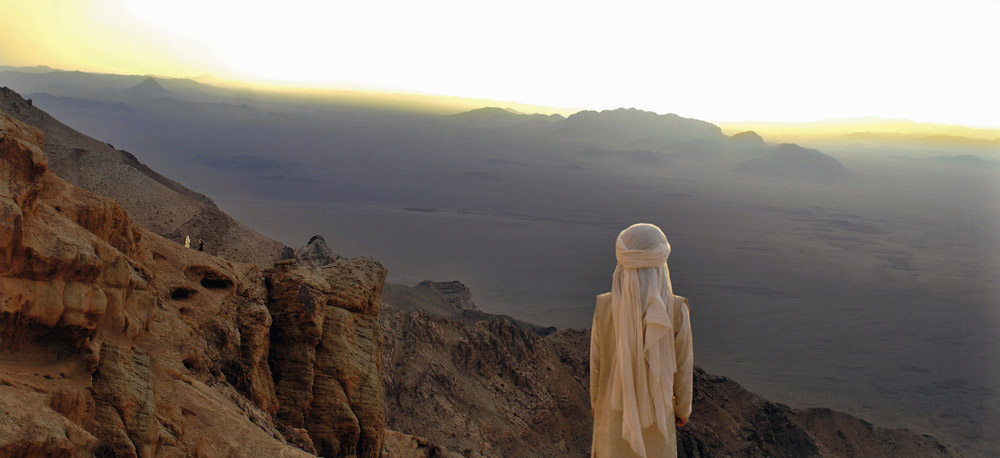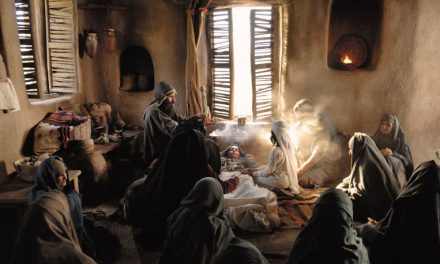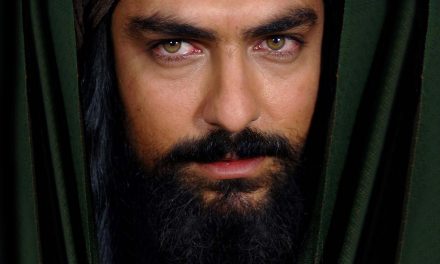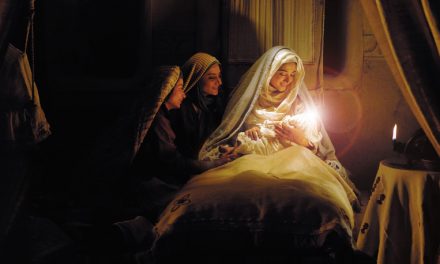In the name of Allah, the Beneficent, the Merciful
A Revealed Image (Second Part)
[A Glance at Muhammad Messenger of God (pbuh)- a Film by Majid Majidi]
Mental Concern and Recreating an Image
When does an image act as a guide and finds a miracle-like position, and when does it become a self-confining wall?
Embodying an idea is the only trade-off we make to make our imaginations more concrete and tangible, and it should be remembered that such an embodiment is ephemeral that may change over time. Societieswho forgot this fact replaced the idea of image as a means to achieve an end with an idea in which image is, in and of itself, the end.
In other words, the image, studying it and excessive embellishment of it has become an independent objective. These societies largely focused on the object rather than dealing with the subject; that is, they emphasized object over subject. They ignored the fact that a pure art not only stresses the object, but also, and more importantly, emphasizes the subject in creating a work of art. For example, a potter in a traditional society would first think of a raison d’être for a jug clay he would like to make, and then turn to the color and other attributions of the jug; that is, he first asked very fundamental questions before making the clay jug. This reflects the difference between “philosophy of art” and “aesthetics”. Philosophy of art deals with subjective concepts such as definition of art or beauty and how beauty is related to art while aesthetics attempts to evaluate balance, symmetry, and harmony in art. Thus, in creating an artwork not only the work in itself is important but the artist who has created it is important too.Language of imagecan neverconveyeverything and may at some point lose its function as a guide for passing spiritual path.Some concepts are so prolific and complicated that cannot be conveyed through any image; concepts related to “angelic realm” and “world of abstraction” will not fit into images; that is, image has no way for entering into the “world of abstraction”. An image can carry the soul just to the skyline at which point the soul should be delivered to the realm of words which can carry it further above; words that, like Buraq[1], will carry us to the heaven. And indeed, that is why Adam, the father of the humankind, was taught some words before his absolution; and again, this is why Virgin Mary was imbued with the word Jesus. Thus, there are restrictions in imagery; restrictions that limit our ability to transcend beyond the endless borders of growth; however, image is undoubtedly an excellent sign for a part of our journey through this meandering route. A notion that views the image as the end confines the audience within the slumberous environment of stagnant water which should be broken to reach the infinite realm of the divine words…where nothing can be perceived through image and imagination.
Light and Water, Allah and Wilayah
A concept that firmly depicted in Muhammad: the Messenger of God is Wilayah (an Arabic term for guardianship) which has been likened to water in Islamic traditions and hadiths of infallible Islamic Imams. The concept has a constant, flowing presence in the film. The film constantly reminds the viewer of the purity and virtuousness of the human nature to set the stage for a scene of allegiance toward the end of the movie where all hands are seen in flowing water to devote their support to Muhammad.
The baroque lighting in Majidi’s movie was an excellent choice for lighting style as baroque is essentially a style in art which emphasizes a shift from pure rationalism, which was a characteristic of Renaissance, to a religion-based reason in the Christian world (baroque here does not refer to the flamboyant embellishments later used by the Catholic Church to divert the style into a deceptive religious art; rather, the term here refers to the origin of this style), and from a polytheistic view toward a harmonious monotheism. All lights in Majidi’s movie are centered on Muhammad who constantly refers to the “Light upon Light” (Surah: An-Nur, Verse: 35) of the existence. The film, and the persona of Muhammad, artfully depicts beauty, avoiding artificial appearance (except for Kaba) which may dim the light off the imagery. In Muhammad: the Messenger of God, two elements, or more precisely, two symbols flow from one scene to the next: light and water; that is, the same elements referred to in Quran and hadiths as the symbols of Allah (light) and Wilayah (water). These shapeless elements, which shape a lot of things, narrate many stories. Such intelligent usage of these elements brings the audience closer to its inner nature, creating a sense of love, passion, and peace sometimes subconsciously; emotions that have been targeted by the film.
Today’s human need for religious Cinema
Many reviewers who criticized Majidi’s film seek stereotypical rationality in his visuals and narrative structure of his script, disregarding the fact that Majidi recognizes that rationality and emotionality should go hand in hand when it comes to delivering knowledge; that is, he is well aware that this incitement of divine knowledge ties art to beauty, and that this incitement should be used in speaking to audience since a positivist rationality is not capable of delivering a miracle which goes beyond the limits of reason.
Majidi recognizes that in a world replete with thousands of philosophical ideas, each claiming to preach religious teachings, where social and intellectual experiences of human being have led artists to uncertainty (open-endedness), and religious cinema cannot base itself on anti-utopian stories and obscure futuristic views that are unable to fill audience with a sense of holiness. He is well aware that how people of the contemporary world crave for a divine universe to quench their thirst for a cinema that astonishes its viewer by a life-giving miracle not by a number of UFOs that attack our being. The contemporary human is fed up with all these eclectic combinations. By such a combination we mean mixing human knowledge with divine revelation. Having experienced scientific, philosophical, and pseudo-mystical insights offered by cinema, the vulnerable human in our contemporary world craves for an original religious insight which creates a cinema with protagonists who, unlike the heroes made in Hollywood, does not need killing, but forgiving to become a hero.

Characterization in religious cinema
In Reel Spirituality: Theology and Film in Dialogue, which examines religious aspects of popular Hollywood movies, Robert K. Johnston assets that Hollywood is consistent with the “emancipation theology” since this theology, which has its origin in the South American church, is based on seeking justice and fighting colonialism and exploitation; unlike the passive theology of the Catholic Church which expects its followers to “turn the other cheek” to someone who slaps them, the emancipatory theology is more consistent with the heroism in the narrative cinematic style of Hollywood. The question is what are the characteristics of a hero in Islamic cinema and particularly, how is the hero depicted in Muhammad: the Messenger of God?
Aristotle believed that a hero in a play must have moralvirtues in order to be able to make audience identify with the hero, to walk the audience through the deep pain the hero suffers, and to give them a peace of mind by emancipating the hero. He is not a hero who asserts his manhood against women, inevitably uses violence, goes to a sage (the archetypal knowledgeable old man) to tell right from wrong, overcomes all obstacles, becomes a hero by living in secluded places far from castles and palaces, and turns anyone against him to an antagonist. He is a hero who cannot choose between love and reason because of being much involved in philosophical questions (in Christian mysticism, unlike the Islamic mysticism, faith and reason are mutually exclusive), a hero who goes through this mysticism to influence natural phenomena. A review of famous movies indicates that how these Christianmystical models have been used to characterize protagonists; these models have no place in Islamic mysticism while they are sometimes mistakenly associated with Islamic beliefs.
And here is the question to ask: Who is the hero in religious cinema? An important point to note is that according to the Islamic mysticism, heroes of Islamic cinema should not impose hardship on them and follow the rules of mortification; rather, they should use this life to make a better afterlife; and such piousness means that these heroes must not be attracted to or fascinated by this world; a point well emphasized by Muhammad: the Messenger of God. In the film, Muhammad and his parents do not follow the rules of mortification; rather, they are great people who are free of unwanted attachments to this world while they use its blessings. Enemies, on the other hand, are greedy people who are enchanted by the materialistic features of this world.
Another point to note is that in the Islamic mysticism, knowledge, in and of itself, is not important as it may even obscure the truth. The important thing is how this knowledge is used to direct yourself and others. Thus, if you want to show something unusual on your film just to excite your audience, you will be wrong when this knowledge has no impact on directing the audience.
[Writed by Sajad Mehregan & Translated by Yousef Qasemi – Thanks to Missis Barkhordari]
[۱] The Horse ridden by Prophet Muhammad in his ascension to the heaven




